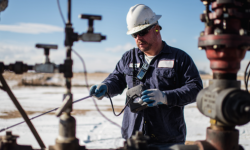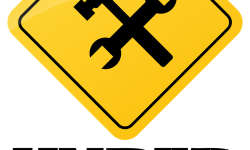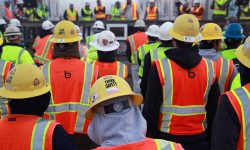They go into unthinkable places that others run out of and risk inhaling smoke and its poisons.
Fire-fighting by definition is dangerous so you might assume the job features prominently when it comes to the riskiest occupations to our health.
In fact, the industries most likely to send you to an early grave in Western Australia currently don’t involve sirens and dramatic rescue operations and instead include agriculture, construction and mining.
According to WorkSafe WA’s data on work-related traumatic injury fatalities, the agriculture, forestry and fishing industry ranked worst over the past decade for fatalities, with the deaths of 45 workers.
Across Australia, one in three agricultural workers who died from a work-related injury between 2011 and 2015 — including farmers, farm managers and their workers — were killed in incidents involving quad bikes, tractors and other agricultural vehicles.
Four-legged animals were responsible for about 19 per cent of the serious injuries in that group which resulted in workers’ compensation claims.
Second in terms of WA fatalities over the past decade was the construction industry, with the deaths of 32 workers, followed by mining reflecting 29 and then 27 in transport, postal and warehouse.
Manufacturing was the fifth deadliest industry with 23 fatalities but it reflected one of the highest injury rates, affecting mostly men in the 25-34 age group.
The majority of workers in these industries were killed either from being caught between something, hit by a falling object, struck by something or falling from a height.
According to work and health safety experts, a safe and healthy workplace does not happen by chance. Employers must do whatever is reasonable to minimise risks and employees, including volunteers, should feel comfortable discussing with their bosses any matters that could affect their health and safety.
They can then be provided with information, training, instruction or supervision so they can carry out their work safely.
“People really need to be aware of hazards in the workplace,” explains Dr Marina Ciccarelli, associate professor at Curtin University’s school of occupational therapy and social work.
“Employers have a responsibility not to expose workers to hazards but workers also have a responsibility not to place themselves or others at risk. The problem is some workers don’t know how to communicate their concerns to management or sometimes the way the workplace is set up doesn’t allow them to do that in a safe way.
“Families need to have discussions with their kids about the questions they should be asking at work because one group very vulnerable at the moment are Christmas casuals and young workers because, through lack of experience, they may place themselves at risk.
“This age group doesn’t want to be seen as not knowing what to do or may have been thrown in the deep end and may not recognise hazards. There are many other people who are also so fearful of losing their jobs that they continue working in the job when it has become an unhealthy working environment.”
Fast facts
The cost of work mental stress to employers is more than $10 billion per year.
FIFO workers in WA experience depression more often than the general population.
Retail workers most often experience workplace violence. Those who work in transport, health and community services are most at risk of stress due to a traumatic event.
A 2010 Australian Bureau of Statistics survey revealed about 70 per cent of the people who were experiencing mental stress related to their work did not put in a workers’ compensation claim. It means actual numbers of people who suffer mental stress from their job is probably much higher than we know of.
National snapshot
The highest number of fatalities (247) between 2011 and 2015 was in the road and rail driving industry. These include bus, rail, delivery and truck drivers. Seventy per cent of those deaths were due to a vehicle collision.
More than half of the fatalities in the construction industry during that same period were due to falling from a height. This industry takes in bricklayers, stonemasons, carpenters and joiners, floor finishers, glaziers, plasterers, painters and roof, wall and floor tilers.
Source: Safe Work Australia website
Did you know?
Forty one per cent of fatalities in the protective services industry, which includes fire and emergency workers, were due to a vehicle collision, according to Safe Work Australia data.
The jobs most likely to affect your health by Katie Hampson. Available from <https://au.news.yahoo.com/thewest/lifestyle/a/33011500/the-jobs-most-likely-to-affect-your-health/#page1>. [October 26, 2016, 11:14 am]









